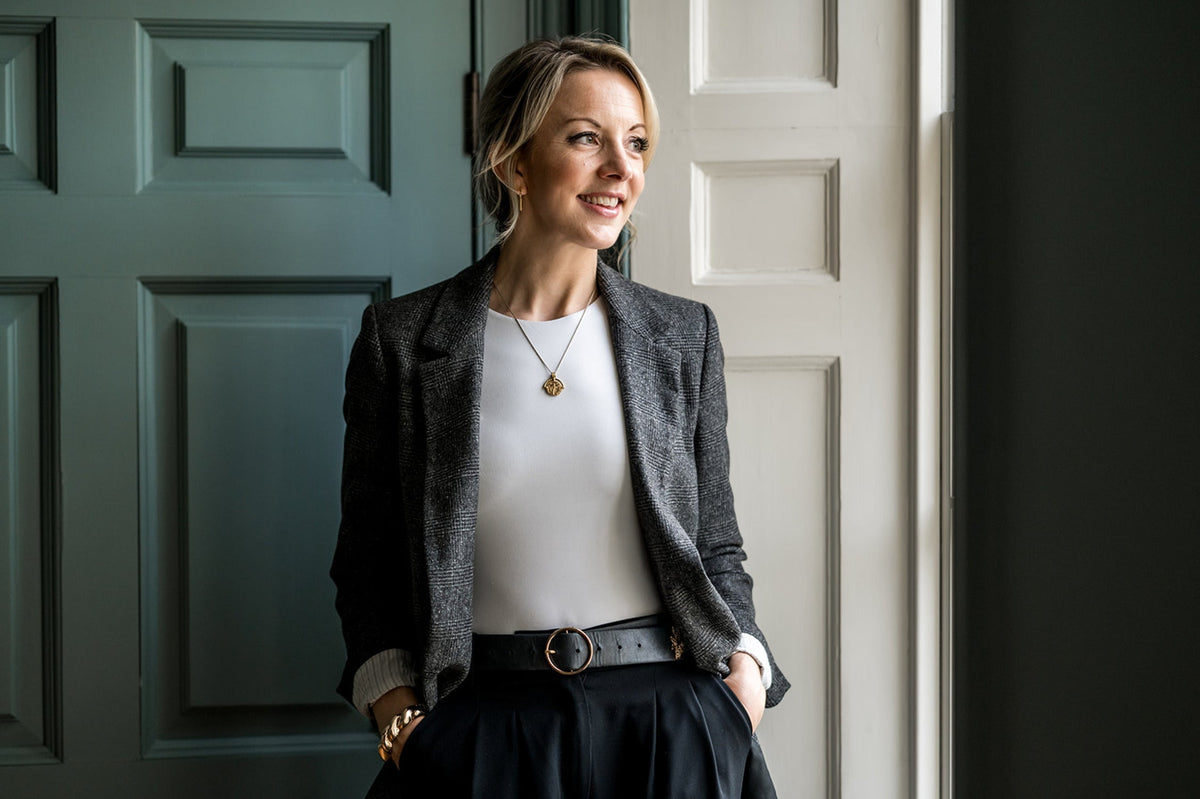

Nutritionists empower people to lead healthier lives by providing tailored, science-backed advice and support on their diet and lifestyles. It’s a rewarding, varied role where it pays to practise what you preach - but what exactly does the average day look like?
Keen to deep-dive into the role and its responsibilities, we asked Extracted’s resident Nutritional Therapist Rachel to share a day in her diary with us.
Table of Contents

I’d describe my life as full and busy. I’m a mum of two and run my own business, meaning I’m constantly juggling school runs with client work, corporate talks and family life.
It isn’t always smooth sailing, but the simple rituals I put in place help me stay energised, grounded and resilient. Here’s what an average day in my life looks like…
Starting the day right - and realistically
7.00am
I’d love to say I begin the day with a perfectly curated morning routine, but the truth is I’m usually woken up by one of my children! Before anything else, I reach for a large glass of water: hydration first thing helps replace the fluid we lose overnight and gives the body an early energy boost.
7.45am
Each morning, I carve out 30 minutes for movement - this is one of my non-negotiables. Today it’s a mix of weights and Pilates at home. Whether it’s a walk, run or strength training, moving my body first thing sets me up with focus and clarity for the rest of the day. Taking two capsules of Flexee the night before supports my joints and aids recovery.
8.15am
Afterwards, I’m ready for a nutrient-dense breakfast. My go-to formula is protein, fibre, healthy fats, and plenty of colour. Today that’s a Greek yoghurt bowl with berries, nuts and seeds, but it might just as easily be eggs or protein pancakes with the kids. This combination keeps blood sugar stable and energy steady through the morning.
Breakfast is washed down with a coffee (I’m a self-confessed coffee snob and our Sage machine is one of the hardest-working appliances in the house!). I’ll also take my Multee Multivitamin and Greens; though I eat a varied diet, our food isn’t as nutrient-dense as it was 50 years ago, so this 40-ingredient mega multivitamin gives me a reliable baseline of nutrition so I know I’m covered.
9.00am
Next comes a dog walk with my dog, Roxy. Sometimes I listen to a podcast, other times I walk in silence. Fresh air and time outdoors help me reset, spark creativity, and keep me grounded when life feels hectic.

Carving out calm during busy days
9.30am
Then it’s into my working day. No two days are the same, and that’s one of the things I love most. Today I’m working from home with a mix of one-to-one client consultations, writing nutrition plans, and preparing for upcoming corporate sessions. This month I’m delivering a series of talks on burnout and resilience, a subject I’m deeply passionate about. Helping people understand how food and lifestyle can reduce overwhelm and restore balance is at the heart of my work.
12.30pm
After a couple of client calls, it’s time for lunch. Today’s is simple: toasted rye bread with smashed avocado, tomatoes and scrambled eggs topped with chilli flakes. Quick, balanced meals like this tick the nutrition boxes without overcomplicating things. I always try to include protein, healthy fats, fibre, and colour.
I take my lunch outside with a herbal tea and ten minutes of stillness. It’s easy to run at full speed all day, but pausing makes me more productive afterwards. If my workload starts to feel heavy I’ll take Calmee, which contains a thoughtful blend designed to promote calm and balance, which I find especially helpful on busier days.
3.00pm
Once client sessions wrap up, it’s time for the school run. I bring the kids a little snack box of nutritious options as they always come out of the classroom hungry! Back at home, it’s straight into dinner prep. Tonight it’s my “super” spaghetti bolognese: organic beef mince with red lentils and plenty of extra vegetables, served with a big green salad and high-protein, gluten-free pea pasta.
I don’t follow a strictly gluten-free diet, but this pasta is higher in protein and fibre, which supports my goals. Eating together as a family is important to me. Not only is it practical, but it’s also a chance to role-model healthy habits and catch up on everyone’s day (even if it does involve plenty of “sit down, please!”).

Setting boundaries (and sticking to them)
5.30pm
After dinner comes homework, bath time, and bedtime with the kids. Once they’re settled, I sometimes dip back into a little work, but I keep a firm boundary - no working beyond 9pm. This gives me time to wind down and prime my body for sleep.
9.00pm
Evenings are deliberately slower. My husband and I might watch a series together, or I’ll pick up a book (though it’s usually only a few pages before I’m asleep!). Around 10pm I head to bed, taking Sleepee to support a restful night’s sleep. Quality sleep is where the body repairs and recharges, and it’s something I prioritise as much as my nutrition.
Aim for consistency, not perfection!
Not every day runs perfectly, and that’s okay. What matters most is consistency, not perfection. For me, simple daily rituals - from a protein-rich breakfast to time outdoors, mindful pauses, family meals, and quality sleep - make the biggest difference. They keep me energised, resilient, and ready to show up fully for my clients, my family, and myself.
Shop our Revolutionary Range
Shop our Essentials Range
Note: This article is for informational purposes only and is not intended to be a substitute for professional medical advice, diagnosis, or treatment. Always seek the advice of your physician or other qualified health provider with any questions you may have regarding a medical condition.



